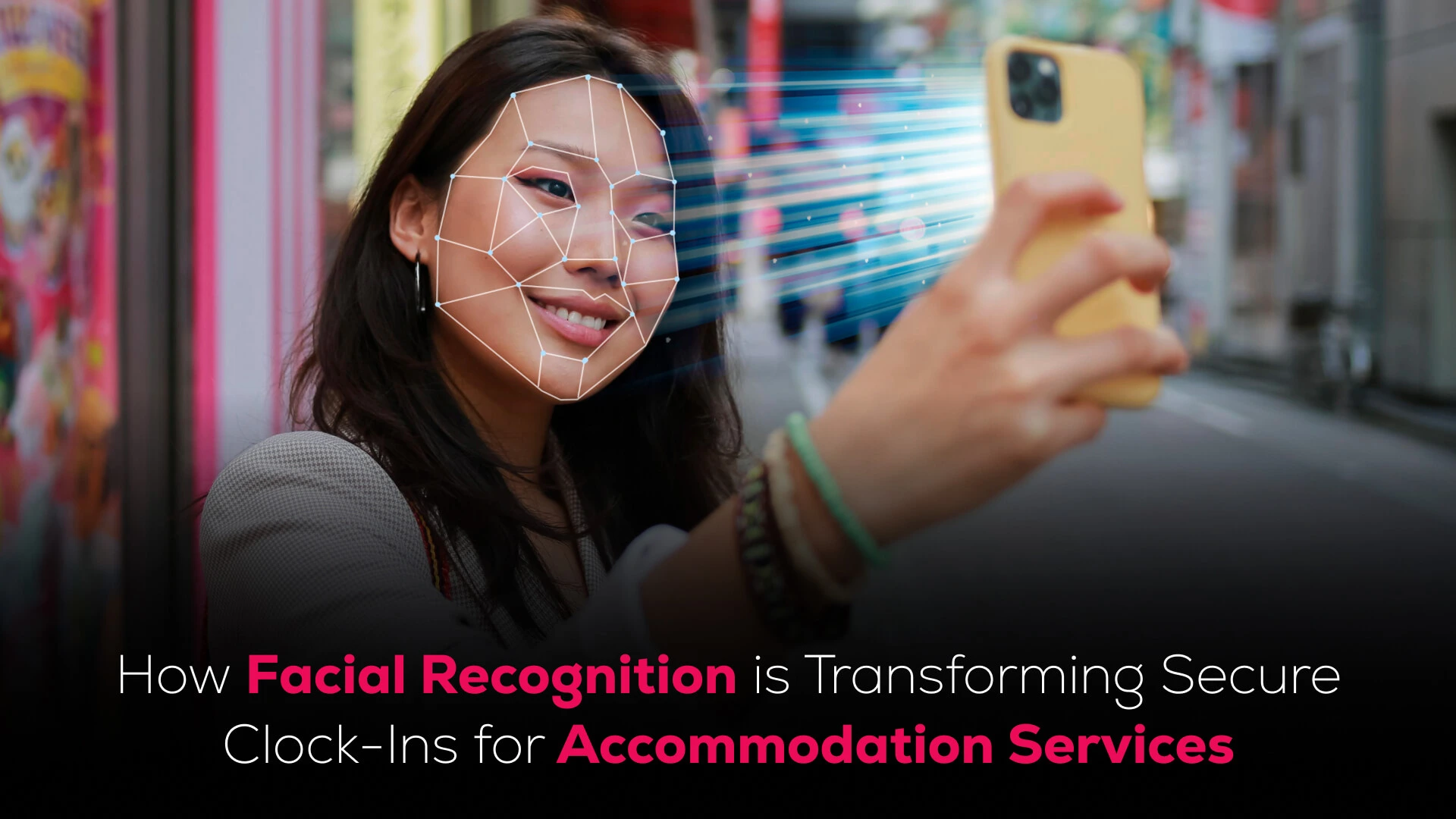
Have you ever wondered if there’s a smarter way to ensure secure Clock-Ins in your accommodation services?
Imagine a system that verifies every support worker’s identity with the ease of a smile. Today, we’re diving into how facial recognition technology is not only changing the game but setting a new standard for security in accommodation management.
For expert care providers across Australia, this isn’t just another upgrade—it’s a leap into a future where every interaction is secure, and every Clock-In delivers peace of mind.
With this article, we can explore how facial recognition is reshaping secure Clock-Ins for accommodation services. We’ll look at the challenges of traditional systems, the benefits of integrating facial recognition, and how eZaango Care Partners is at the forefront with their new integration.
In recent years, facial recognition technology has moved from the realm of science fiction into practical, everyday use. Initially seen in smartphones and border control, facial recognition technology application has expanded into various industries.
For accommodation services, particularly those supporting independent living, security is a top priority. Traditional Clock-In systems—relying on manual sign-ins or outdated biometric methods—often fall short in providing the real-time, foolproof authentication needed for today's fast-paced environment.
Facial recognition brings a blend of convenience and precision. Instead of fumbling for ID cards or passwords, care providers can use this technology to instantly verify identities, ensuring that only the right personnel have access. This shift not only increases security but also frees up valuable time for staff, allowing them to focus on delivering quality care.
Before the integration of facial recognition, providers often grappled with several persistent challenges:
For expert care providers, these challenges are more than mere inconveniences—they can directly impact the trust and safety of the accommodation.
As the need for faster, more reliable systems grows, facial recognition offers a powerful solution that addresses these pain points head-on.
Facial recognition technology works by capturing an individual’s unique facial features and comparing them against a secure database. Here’s why this technology is a game-changer for secure Clock-Ins:
One of the standout benefits is the peace of mind that comes from knowing every clock-in is secure. For expert care providers, this means fewer security breaches, a more efficient workflow, and ultimately, a higher standard of care for residents.
For expert care providers looking to adopt facial recognition, Planning is Key.
Integrating new technology into an established workflow may seem daunting, but the benefits are clear. Begin by mapping out your current Clock-In process and identifying where delays or security gaps exist.
Then, determine how facial recognition can address these issues.
With eZaango Care Management software already in place, you have a proven model that simplifies the transition. Training is another essential component. Staff must understand how to use the new system effectively.
Simple training sessions, combined with ongoing support, can help your team quickly adapt to the enhanced process. Remember, the goal is to make operations smoother—not more complicated.
At the heart of this transformation is eZaango Care Partners. Their integration of facial recognition into accommodation services is a testament to their commitment to innovation.
By focusing on the specific needs of care providers, eZaango has crafted a solution that is both user-friendly and robust. Their approach is simple: enhance security without complicating your daily operations.
When a support worker arrives, the facial recognition system verifies their identity in seconds, ensuring that only the right person gains access. This streamlined process means fewer errors, faster Clock-Ins, and ultimately, more time for what truly matters—caring for residents.
eZaango’s system is designed to meet and exceed NDIS standards, making it a trusted solution for accommodation management. The feedback from early adopters has been overwhelmingly positive, with many praising the simplicity and reliability of the new clock-in process.
It’s clear that when technology is built with the user in mind, it can transform even the most routine tasks into opportunities for excellence.
The implementation of facial recognition technology extends far beyond just a faster clock-in. It creates a more secure and supportive care environment.
When every clock-in is verified with a simple scan, you eliminate the uncertainty that can accompany manual processes. This peace of mind is not only valuable for providers but also for clients and their families.
Imagine a scenario where every support worker is authenticated in seconds, reducing waiting times and eliminating the stress of unverified entries. This means fewer disruptions in daily routines and a greater focus on delivering high-quality care.
As we wrap up our discussion on how facial recognition is transforming secure clock-ins for accommodation services, it’s clear that the future of care management is bright.
So, what does this mean for you?
It means fewer headaches, faster processes, and a safer environment for everyone involved. It means stepping into a future where technology is an ally in delivering exceptional care.
And most importantly, it means building a legacy of trust and reliability that your residents and their families can count on.
We invite you to explore this new frontier with us. Embrace the change, invest in innovation, and join us as we revolutionise security in accommodation for the better. Together, we can create a world where every Clock-In is a step towards a more secure and efficient future.
Share: